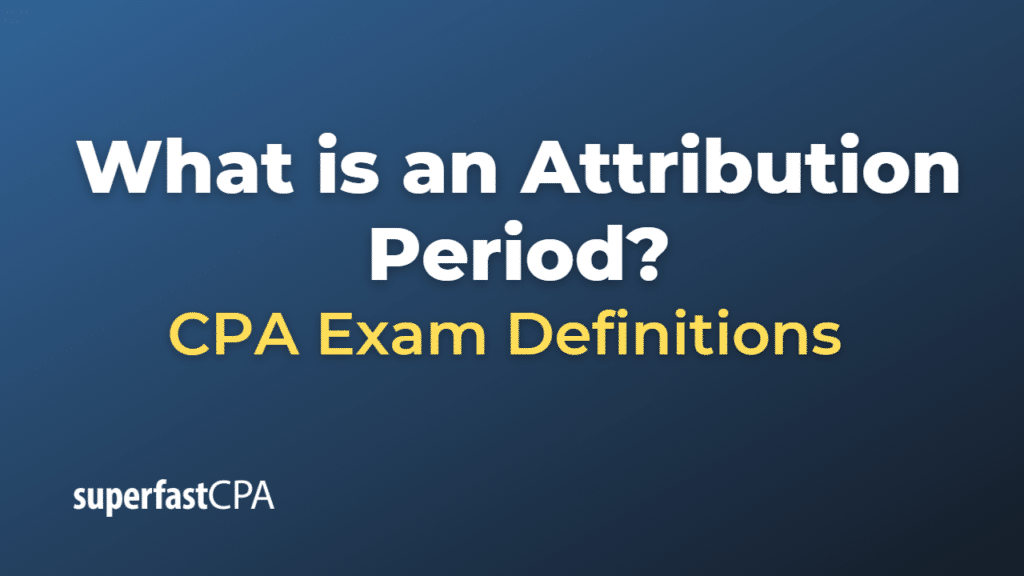Attribution Period
An attribution period is a specified time frame within which an investor’s performance is measured and attributed to their investment decisions. In the context of portfolio management, the attribution period is used to assess the performance of a portfolio manager, allowing investors to evaluate the effectiveness of the manager’s investment strategy and decisions during that time.
Typically, an attribution period can be a month, a quarter, a year, or any other period deemed appropriate for performance evaluation. During this period, the portfolio’s performance is compared to a benchmark index or other relevant metrics to determine how well the portfolio manager has managed the investments. The attribution period helps investors understand the drivers of the portfolio’s performance and the manager’s skill in selecting investments, managing risks, and achieving the desired investment objectives.
For example, an investor who wants to evaluate a portfolio manager’s performance over the past year would look at the attribution period of one year. They would compare the portfolio’s returns to a relevant benchmark index and analyze the investment decisions made by the manager during that period to determine their effectiveness.
Example of an Attribution Period
Let’s assume that you are an investor evaluating the performance of a portfolio manager who manages a U.S. large-cap equity fund. You decide to analyze the manager’s performance over the past year, making the attribution period one year.
- Benchmark: The S&P 500 Index is a commonly used benchmark for U.S. large-cap equities. Assume that the index had a return of 10% during the one-year attribution period.
- Fund Performance: The fund managed by the portfolio manager returned 12% during the same period.
- Attribution Analysis: To evaluate the manager’s performance, you would look at the investment decisions made by the manager and how they contributed to the fund’s return. This could include:a. Stock selection: The manager might have chosen stocks that outperformed the benchmark, resulting in a higher return. b. Sector allocation: The manager might have allocated more funds to sectors that performed well during the period, contributing to the fund’s outperformance. c. Risk management: The manager might have successfully managed risks, protecting the fund from significant losses during market downturns.
By analyzing the attribution period of one year, you can determine that the portfolio manager outperformed the benchmark index by 2% (12% – 10%). This could indicate that the manager made effective investment decisions, such as selecting high-performing stocks, allocating funds to well-performing sectors, or managing risks efficiently, which contributed to the fund’s superior performance during the period.













